The Outskirts Of Cuzco
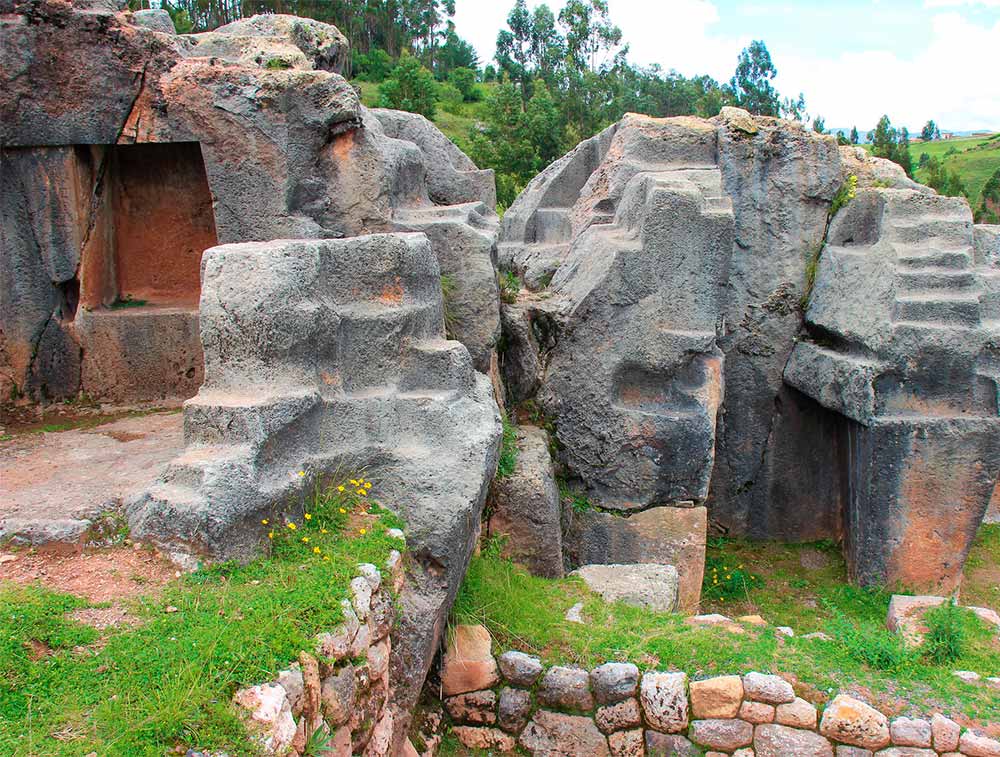
The outskirts of Cuzco are densely filled with logic-defying megalithic structures.
These strange complexes feature laser-cut pieces of stone that seemingly make any sense. From hollowed out squares carved directly into huge slabs of rocks, to stairs that apparently lead to nowhere, to shapes that are just abstract.
We know, however, that any civilization that was able to achieve this level of craftsmanship was highly intelligent, and must’ve done things for a very specific purpose.
The thing is, they probably just don’t make sense to our modern eyes.
Were they quarries? If so, why some of the stone walls from which the blocks were quarried are completely polished? Why take care of smoothing and polishing a stone wall, if it only served as a quarry?
Were they bigger complexes, and we are just watching the few remains of very ancient structures?
One thing is certain: stretching for miles around Cuzco, the megalithic civilization that settled in this space built so many structures in and around the city that the whole area must’ve looked otherworldly in ancient times.
Inkilltambo
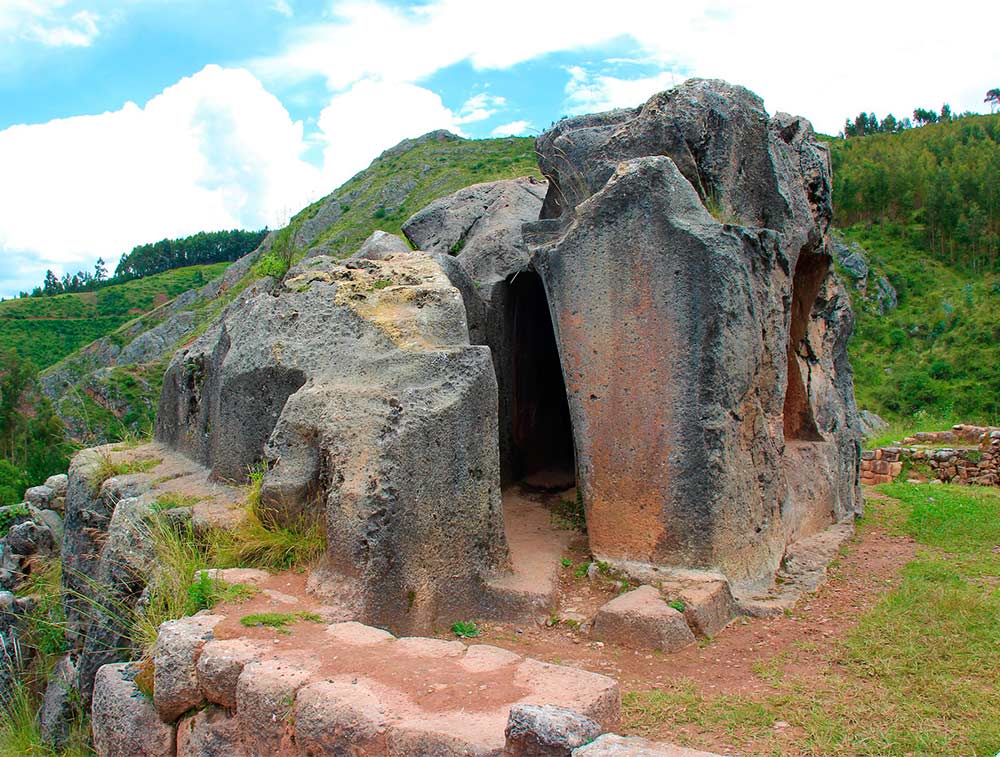
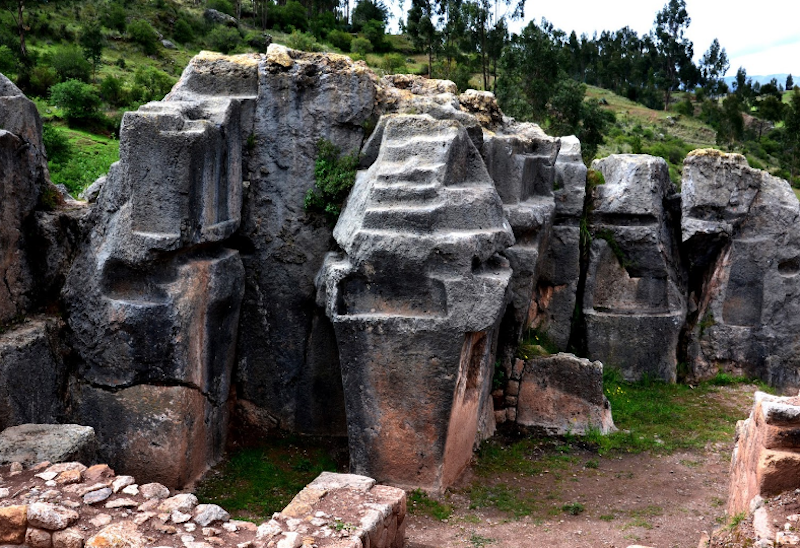
Unveiling the Mysteries of Inkilltambo: A Megalithic Marvel in South America
Hidden within the breathtaking landscape of Peru’s Sacred Valley, the archaeological site of Inkilltambo offers a glimpse into the sophisticated engineering and rich cultural heritage of the Inca civilization. Located near Cusco, this lesser-known but significant site, often referred to as “Inka’s Garden,” is a testament to the ingenuity and spiritual depth of the ancient Incas.
The Terraced Wonder
Inkilltambo is renowned for its extensive and well-preserved agricultural terraces. These terraces are not merely a testament to the agricultural prowess of the Incas but also reflect their deep understanding of environmental management. The terraces were designed to maximize arable land in the rugged Andean terrain, ensuring efficient water distribution and soil preservation. The precision and scale of these constructions highlight the Incas’ ability to harmonize architecture with nature.
The Ceremonial Center
At the heart of Inkilltambo lies a ceremonial center that underscores the spiritual significance of the site. This area includes finely carved stone structures, altars, and niches that were likely used for religious and ceremonial purposes. The intricate stonework and the placement of these structures suggest a deep connection to the Inca cosmology, where rituals were performed to honor deities, nature, and the cosmos.
The Mysterious Water Channels
One of the most intriguing features of Inkilltambo is its complex network of water channels and aqueducts. These channels demonstrate advanced hydraulic engineering, designed to manage and distribute water efficiently throughout the terraces and ceremonial areas. The precise construction of these waterworks indicates a sophisticated understanding of hydrodynamics, ensuring a constant supply of water essential for both agriculture and ceremonial functions.
The Enigmatic Carvings
Scattered throughout Inkilltambo are numerous stone carvings that add to the site’s enigmatic allure. These carvings depict various figures, including animals and possibly deities, each with potential symbolic meanings that are still subject to interpretation. The carvings offer valuable insights into the artistic expressions and religious beliefs of the Inca people, yet their exact significance remains a subject of ongoing research.
Archaeological Discoveries
Recent archaeological excavations have uncovered artifacts and structures that provide a deeper understanding of Inkilltambo’s role within the Inca Empire. These discoveries include pottery, tools, and remnants of buildings that suggest the site was not only a ceremonial center but also a hub of daily life and agricultural activity. The findings continue to enrich our knowledge of how the Incas integrated their spiritual and practical needs into their environment.
Theories and Speculations
Scholars have proposed various theories about the primary function of Inkilltambo. Some suggest it was a royal estate or retreat, used by Inca nobility for relaxation and religious ceremonies. Others believe it served as an experimental agricultural station where the Incas developed and refined their terrace farming techniques. Despite these theories, much about Inkilltambo remains shrouded in mystery, inviting further exploration and study.
Inkilltambo stands as a remarkable example of Inca ingenuity and their harmonious relationship with the natural world. Its terraced landscapes, ceremonial structures, intricate water channels, and enigmatic carvings continue to captivate archaeologists and visitors alike. As research progresses, Inkilltambo promises to unveil more secrets, offering deeper insights into the sophisticated civilization that once thrived in the Sacred Valley of Peru.
Chinchero
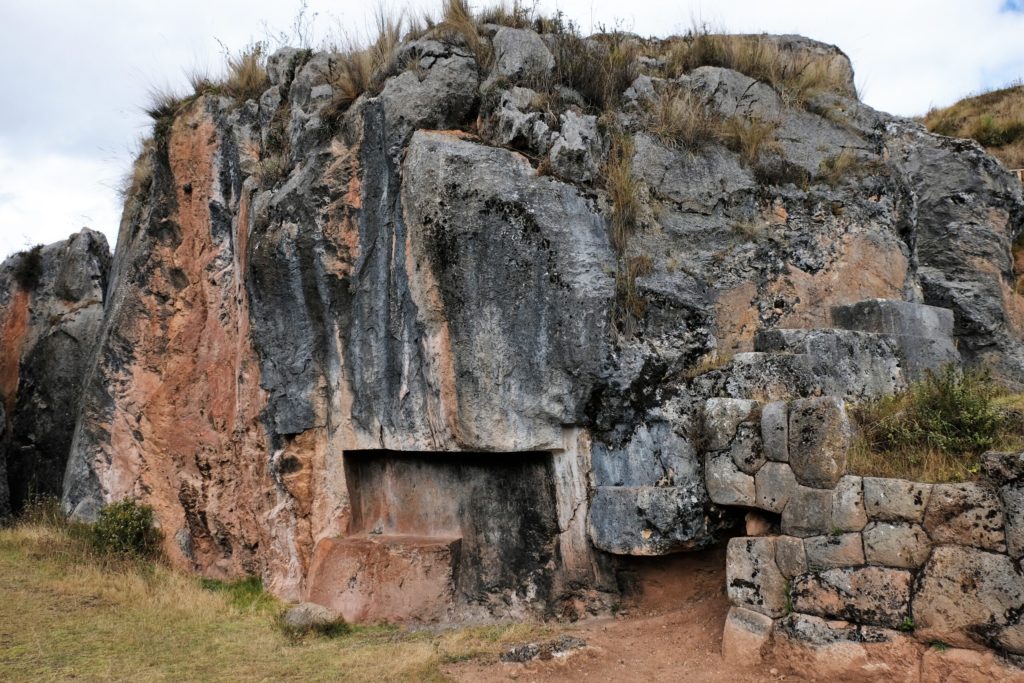
Exploring the Ancient Splendor of Chinchero: A Megalithic Gem in the Sacred Valley
Perched high in the Andean mountains, the town of Chinchero in Peru is a captivating blend of ancient Inca ruins, colonial architecture, and vibrant indigenous culture. Located about 30 kilometers northwest of Cusco, Chinchero is often referred to as the “Birthplace of the Rainbow” and holds a significant place in both Inca history and contemporary Peruvian life. This site, rich in megalithic structures and agricultural terraces, offers a unique glimpse into the ingenuity and spiritual depth of the Inca civilization.
The Inca Terraces of Chinchero
One of Chinchero’s most striking features is its extensive system of agricultural terraces. These terraces, carved into the mountainside, exemplify the Inca’s advanced agricultural techniques and their ability to adapt to the challenging Andean environment. The terraces not only maximized arable land but also created microclimates, allowing the Incas to cultivate a variety of crops. The precision and durability of these constructions are a testament to the Incas’ mastery of stone masonry and environmental engineering.
The Plaza and Inca Walls
Chinchero’s main plaza is surrounded by impeccably crafted Inca walls, which have withstood the test of time and seismic activity. These walls, made of precisely cut and fitted stones, showcase the Incas’ exceptional stone-working skills. The plaza itself is a vibrant hub where local artisans sell traditional textiles, continuing the rich cultural traditions of the Quechua people. The combination of ancient architecture and living culture makes the plaza a focal point of Chinchero.
The Enigmatic Stone Structures
Scattered throughout Chinchero are various megalithic stone structures, each with its own unique characteristics. These structures, some of which are thought to have served ceremonial purposes, add to the enigmatic allure of the site. Among these is the Templo del Arco Iris, or Temple of the Rainbow, which is believed to have been used for astronomical observations and rituals related to water and agriculture.
Advanced Hydraulic Systems
One of the most remarkable aspects of Chinchero is its sophisticated hydraulic system. The Incas constructed an intricate network of aqueducts, canals, and water channels to manage and distribute water efficiently across the terraces and residential areas. This system not only ensured a reliable water supply but also prevented soil erosion and maintained the fertility of the agricultural lands. The precision and functionality of these waterworks reflect the Incas’ advanced understanding of hydrodynamics and environmental management.
Archaeological Significance
Archaeological excavations in Chinchero have unearthed a wealth of artifacts, including pottery, tools, and textiles, which provide valuable insights into the daily life and cultural practices of the Inca people. These findings suggest that Chinchero was not only a center of agricultural innovation but also a significant ceremonial and administrative hub. The ongoing research continues to shed light on the multifaceted role of Chinchero within the Inca Empire.
Theories and Speculations
Scholars propose various theories regarding Chinchero’s primary function in the Inca period. Some suggest it was a royal estate belonging to the Inca emperor Tupac Yupanqui, while others believe it served as a strategic military outpost or a center for agricultural experimentation. Despite these theories, many aspects of Chinchero’s history remain open to interpretation, inviting further exploration and study.
Chinchero stands as a remarkable testament to the ingenuity and cultural richness of the Inca civilization. Its well-preserved terraces, enigmatic stone structures, advanced hydraulic systems, and vibrant contemporary culture continue to captivate archaeologists and visitors alike. As research and exploration continue, Chinchero promises to reveal even more secrets, offering deeper insights into the sophisticated world of the Incas and their enduring legacy in the Sacred Valley of Peru.
Kallachaka
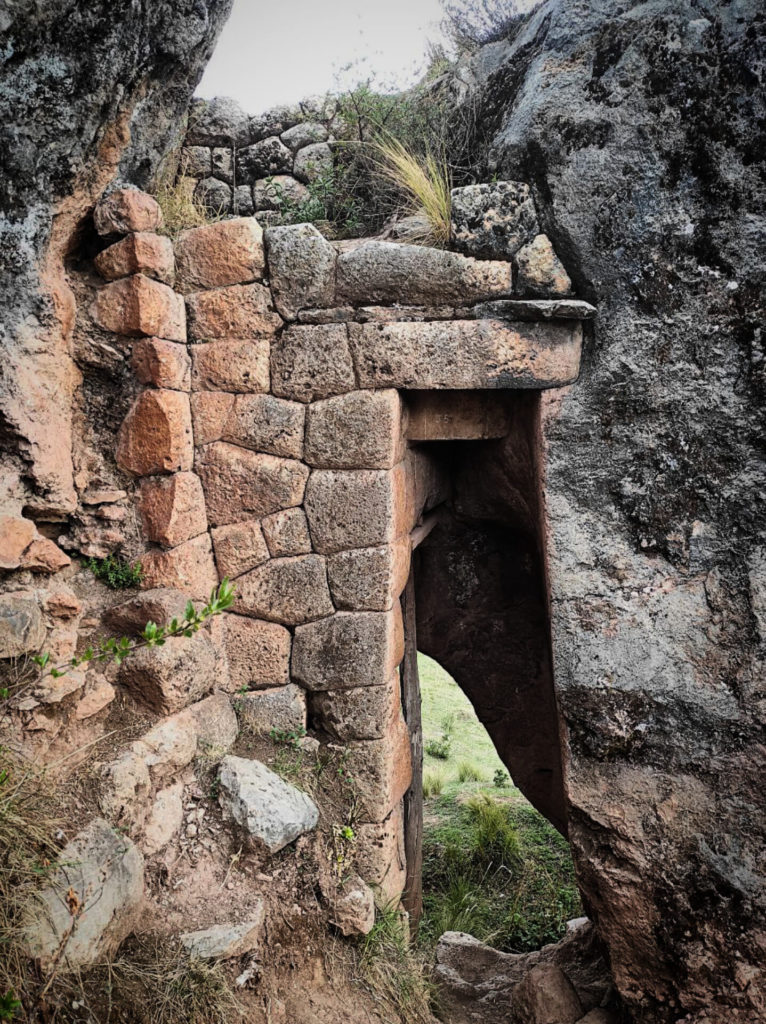
Uncovering the Mysteries of Kallachaka: An Ancient Megalithic Site in Bolivia
Nestled in the highlands of Bolivia, the ancient site of Kallachaka stands as a testament to the engineering prowess and spiritual depth of pre-Columbian civilizations. Located near the town of Viacha, close to the famous Tiwanaku ruins, Kallachaka is a lesser-known archaeological gem that continues to intrigue researchers and visitors alike.
The Monolithic Structures
Kallachaka is renowned for its impressive monolithic structures, some of which weigh several tons and are carved with remarkable precision. These stones are arranged in a manner that suggests advanced knowledge of architecture and engineering. The exact methods used to transport and position these massive stones remain a subject of speculation and wonder.
Ceremonial Significance
Central to Kallachaka is a ceremonial area believed to have been used for religious and astronomical purposes. The alignment of certain structures with celestial bodies indicates a sophisticated understanding of astronomy by the ancient builders. This ceremonial center would have been a focal point for rituals and gatherings, underscoring the spiritual significance of the site.
Intricate Carvings
The site features intricate carvings on its stone surfaces, depicting various symbols and figures. These carvings provide valuable insights into the artistic expression and symbolic language of the civilization that constructed Kallachaka. While their exact meanings are still debated, these carvings are thought to represent deities, cosmological concepts, and cultural narratives.
Advanced Water Management
Kallachaka also showcases advanced water management systems, including canals and reservoirs. These features highlight the importance of water in both the daily life and spiritual practices of the site’s inhabitants. The careful design of these waterworks demonstrates a deep understanding of hydraulic engineering and environmental adaptation.
Theories and Speculations
Various theories have been proposed regarding the purpose and origins of Kallachaka. Some researchers suggest it was a significant ceremonial site for the Tiwanaku culture, while others believe it may have served as an administrative or astronomical center. Despite numerous studies, many aspects of Kallachaka’s history remain shrouded in mystery, inviting further exploration.
Kallachaka stands as a fascinating example of ancient ingenuity and spiritual devotion. Its monolithic structures, intricate carvings, and advanced water management systems continue to captivate those who visit and study the site. As archaeological research progresses, Kallachaka promises to reveal more about the rich cultural heritage and sophisticated knowledge of the ancient civilizations of Bolivia.
Kusilluchayoc
Exploring the Enigmatic Megalithic Site of Kusilluchayoc in South America
Nestled in the heart of the Sacred Valley of the Incas in Peru, the megalithic site of Kusilluchayoc stands as a testament to the advanced engineering and architectural prowess of ancient civilizations in South America. This enigmatic site, located near the city of Cusco, is less known than the famed Machu Picchu, yet it holds a plethora of mysteries that continue to intrigue archaeologists and historians alike.
The Stone Monoliths of Kusilluchayoc
Kusilluchayoc, often overshadowed by other Incan sites, is renowned for its impressive stone monoliths. The site features large, intricately carved stones, some of which weigh several tons, arranged in a manner that has baffled researchers for decades. The precision with which these stones are fitted together, without the use of mortar, highlights the advanced knowledge of the ancient builders in stone masonry.
The “Temple of the Monkeys”
One of the most intriguing features of Kusilluchayoc is the “Temple of the Monkeys,” named after the carvings of monkey figures that adorn some of the stones. These carvings are believed to hold symbolic significance, possibly related to the spiritual or religious practices of the ancient inhabitants. The exact meaning of these carvings remains a subject of debate, adding to the site’s mystique.
The Enigmatic Altar
At the center of Kusilluchayoc lies an enigmatic stone altar, which is thought to have been used for ceremonial purposes. This altar is distinguished by its unique design and the precision of its construction, suggesting that it held significant importance in the rituals performed by the site’s ancient occupants. The exact nature of these rituals is still unknown, contributing to the site’s aura of mystery.
Advanced Engineering Techniques
The construction techniques used at Kusilluchayoc showcase an advanced understanding of engineering principles. The stones are not only massive but also shaped and placed with such accuracy that they have withstood centuries of environmental wear and seismic activity. This durability points to a sophisticated level of knowledge in both architecture and geology, which remains a topic of admiration and study.
Theories and Speculations
Various theories have been proposed to explain the purpose and construction of Kusilluchayoc. Some researchers suggest that it was a religious or ceremonial site, possibly used for astronomical observations, given its alignment with celestial bodies. Others believe it may have served as a center of social or political activity. Despite numerous studies, the true purpose of Kusilluchayoc remains elusive, fueling ongoing research and speculation.
Conclusion
Kusilluchayoc is a remarkable example of the ingenuity and skill of ancient South American civilizations. Its megalithic structures, enigmatic carvings, and advanced engineering continue to captivate those who visit and study the site. As research progresses, Kusilluchayoc promises to reveal more about the rich cultural heritage of the region and the mysteries of its ancient past.
